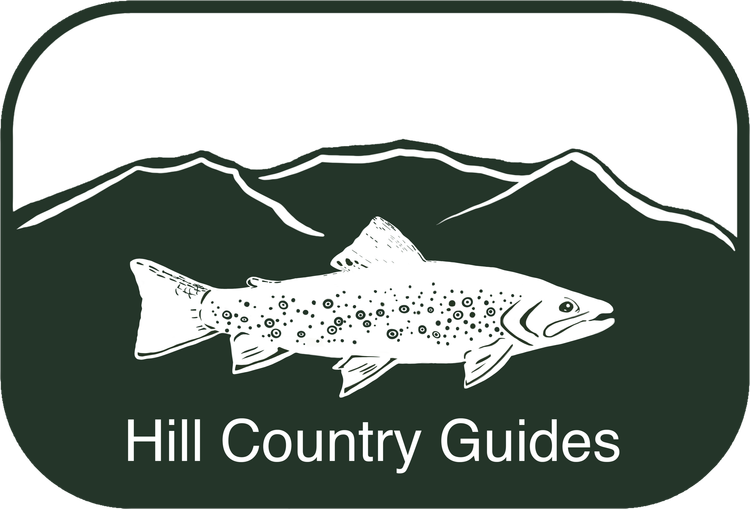Had a great day on the water yesterday. I Guided Jon, a long time client of mine. We started the morning targeting large rainbows in small water. After a quick tune up on casting weighted nymph rigs, Jon was in the zone. As he made methodical drifts the indicator would dip now and again only to reveal a snagged stick, or rock. On about the eleventh drift the indicator stopped again, Jon lifted the rod, and the rod came back down. There were two flashes of metallic purple and the line went slack. Jon turned to me, saying without words, "Okay, they are here!" We made a few more drifts before deciding to rest the spot. Then we moved upstream and focused on a pregnant looking seam. On the first cast the indicator lulled. Jon pulled up and there was a slight movement, on the end of his line. "That was a fish." He said, and I nodded. I could sense Jon focusing in, absorbing the intricacies of this fishing. At this point I simply wanted Jon to land one fish, to make the learning circle complete. On the next drift the indicator pulsed, Jon set the hook and felt a heavy shake...then nothing. Two more casts and no fish. At this point I was getting nervous. Then Jon made a perfect cast. I watched the indicator drifting into the heart of the seam, it made a quick shift upstream and Jon's arm set downstream. The fish was on, it was my turn. I grabbed the net and worked my way below the thrashing, after a few pulsating runs, I netted the fish just above a risky rapid. With a few pictures on Jon's camera the circle was complete. But Jon wasn't done. On the next cast he hooked a second, even bigger fish. I had a few near misses with the net before the fish finally turned broadside, allowing her capture. We fished a few more seams, but the sun had risen and the fish had gained caution. It was time to move on.
In the afternoon we decided to hit a remote wild brook trout pond. When we arrived the pond was flat, devoid of rises. We decided to fix some lunch and watch the water. As we ate Jon mentioned that he was seeing some small rises. I noted that they were not rises but emerging mayflies penetrating the surface film. We could actually see the bugs bursting through the waters surface. While we expected to see a burst of rising fish, there was nothing.These wild brook trout are wary of predators from above. They tend to make subtle rises to emerging nymphs. Thus while we did not notice any rises at first, we began seeing boils scattered about the pond. I put down my sandwich to tie on a soft hackle nymph, and let Jon take some casts while I finished lunch. After missing a few takes, Jon slid out in his float tube and It wasn't long before a writhing brookie danced on the end of his line. While Jon continued to catch fish on nymphs, I experimented with dry flies, trying to will a fish to the surface. When I finally did I let Jon know and tied the appropriate mayfly pattern to the end of his line. After covering a few rises, a fish struck, engulfing his fly. With this accomplishment, we decided to call it a day.
As is often the case on fishing trips, it was hard to quite. So, on our way out, we decided to bushwhack to a beaver pond. As we pushed through the Alders I could see the ring of a rise, but the fish refused the dry fly. With the nymph back on the line the fish attacked like piranha. Although they struck fiercely they would turn quickly and spit the hook. Eventually Jon hooked something...a dace. As an experiment I threw the dace to the center of the pond. Nothing happened at first, but suddenly there was a flurry of activity, the silver flashes of the dace disappeared into blackness. We tied on a streamer. On about the third cast a seven inch brook trout smashed the fly. As he came writhing towards us there was a dark shadow looming behind him. The bigger brook trout looked up, turned and vanished into the depths. We went fish-less for the next twenty minutes, and called it a day...for real.
Thanks for a great trip Jon.


